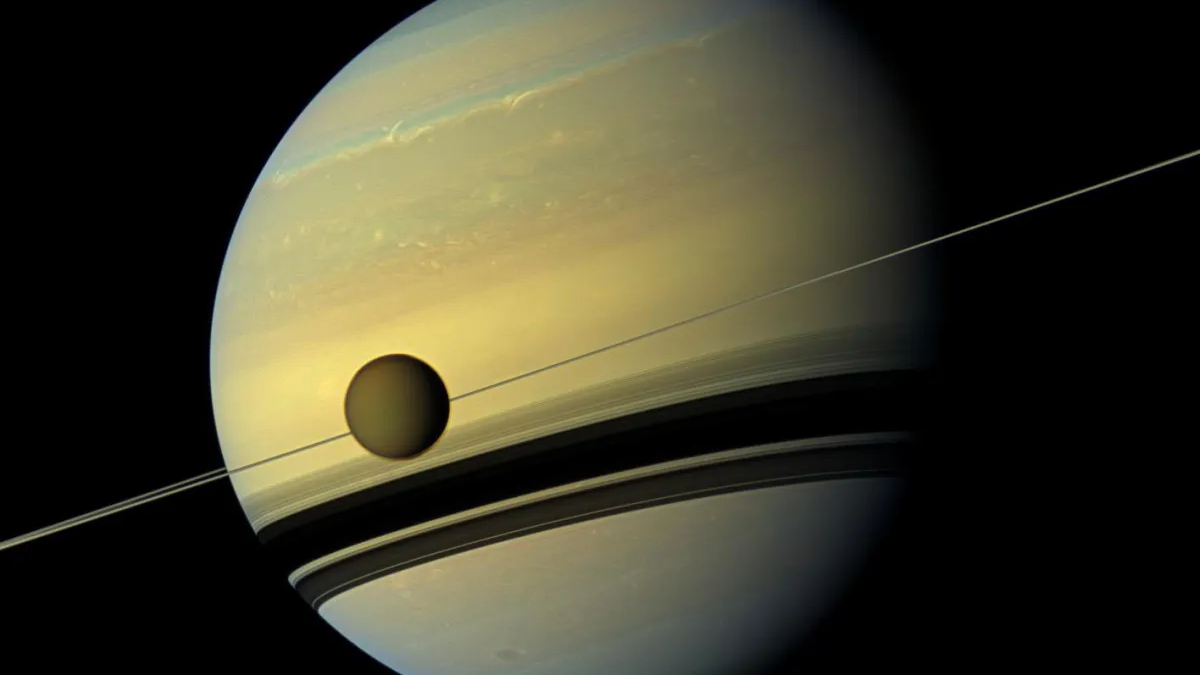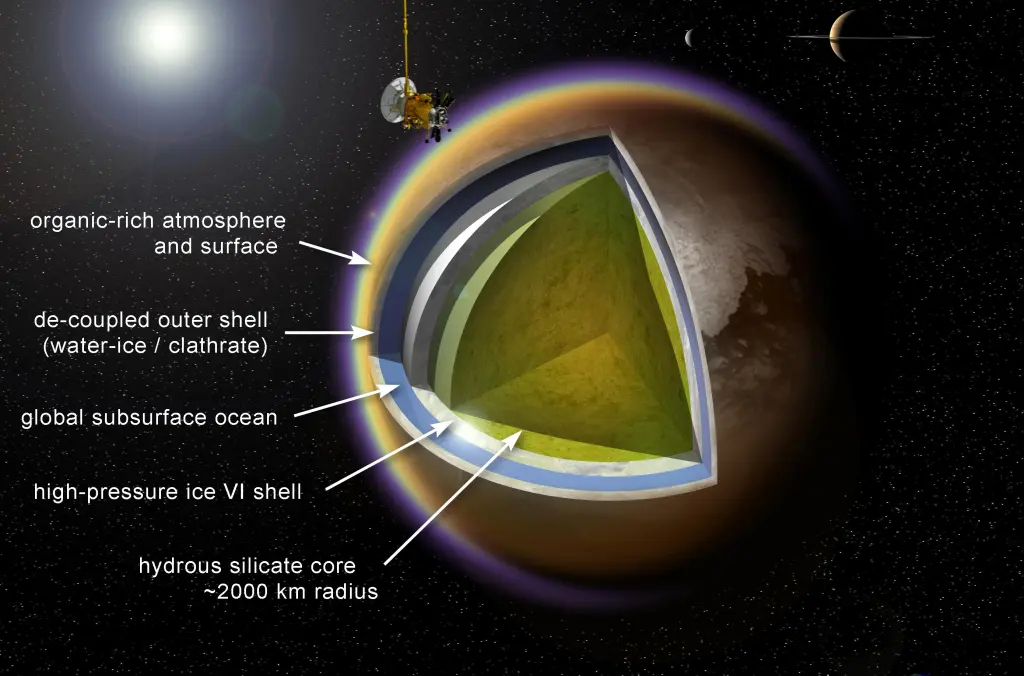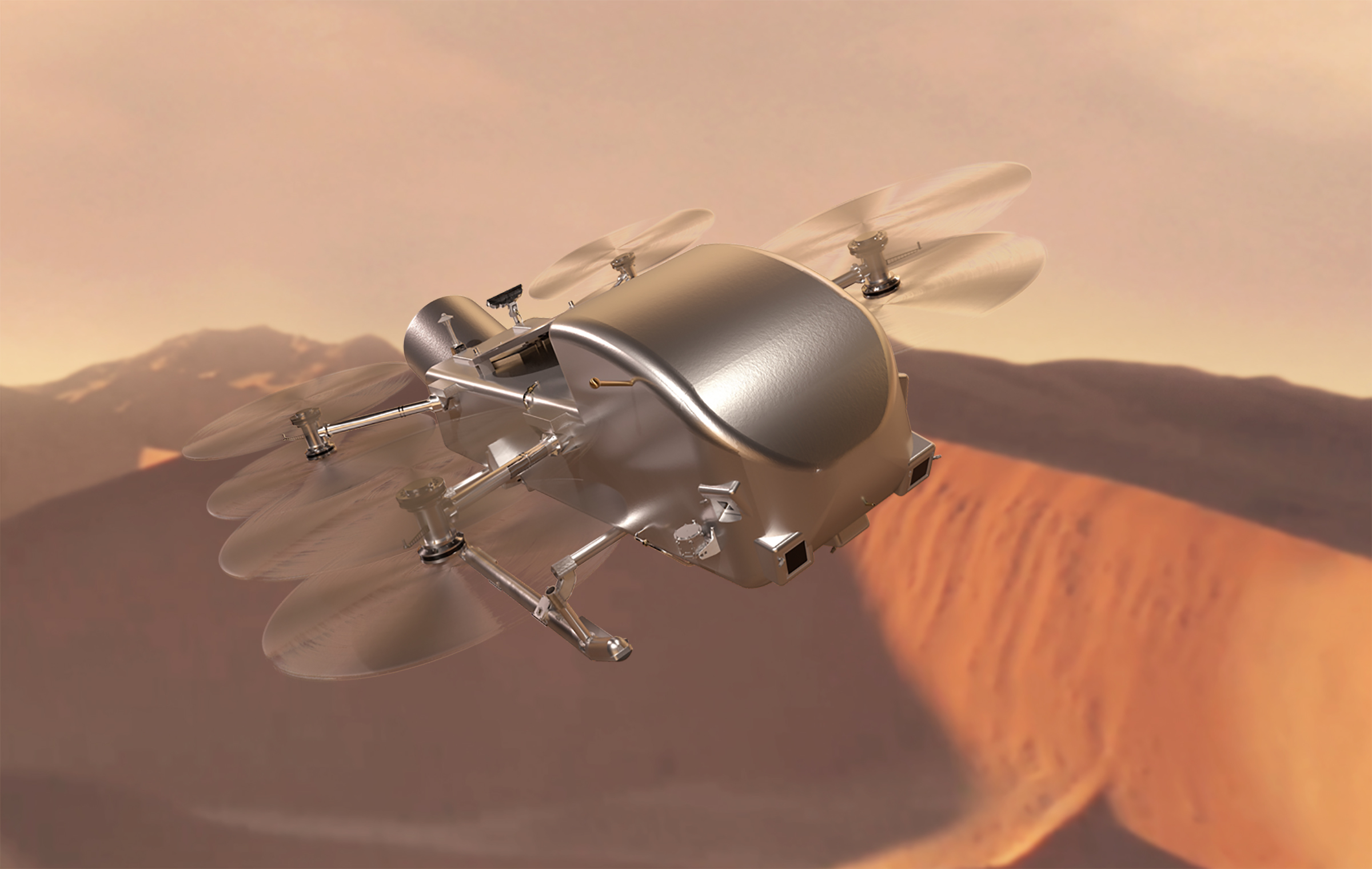
Titan's underground ocean, and similar oceans inside other icy moons in the outer solar system, may lack the organic chemistry necessary for life, according to new astrobiological research.
Titan is Saturn's largest moon, and the second largest moon in the entire solar system. It's famous for being shrouded in a smog of petrochemicals and for possessing a veritable soup of organic molecules — molecules that contain carbon — on its surface. Yet, despite all this fascinating chemistry, Titan is cold. Very cold. It has surface temperatures no warmer than –179 degrees Celsius (–290 degrees Fahrenheit). And in these frigid conditions, chemical reactions for life progress very slowly.
However, deep underground where it's warmer — the exact depth is not certain, but estimates suggest it's on the order of 100 kilometers (62 miles) — a liquid ocean with a volume 12 times that of Earth's oceans combined is thought to exist. Similar oceans inhabit the interiors of Titan's fellow Saturnian moon Enceladus, and Jupiter's moons Europa and Ganymede.
Related: Subsurface ocean tides on Saturn's moon Titan are influenced by its icy crust
And where there is liquid water, there could be life. Right? Not so fast, says Catherine Neish of Western University in Ontario, Canada.
A planetary scientist, Neish led an international team that challenged the assumption Titan's ocean, and indeed the oceans of other icy moons, could be habitable.
The researchers worked on the basis that, for Titan's ocean to be habitable, a large supply of organic molecules from the surface must be able to physically reach the ocean in order to facilitate prebiotic chemistry that can produce and feed life.
The route for this organic material to reach the ocean is via comet impacts. Such impacts can melt surface ice, creating a pool of liquid water filled with organic molecules. Because liquid water is denser than ice, it sinks. But, Neish's modeling found that the rate of impacts is not high enough for sufficient organic material to reach Titan's ocean.

For example, Neish's team estimates only about 7,500 kilograms (16,534 pounds) of the simplest amino acid, glycine, reaches Titan's ocean every year. It may sound like a lot, but that's equivalent to the mass of one male African elephant spread across an ocean with a dozen times the volume of Earth's oceans. If you’ll excuse the pun, it's barely a drop in the ocean.
"We assumed that the majority of melt deposits — 65% — would sink all the way to the ocean," Neish told Space.com. "Recent modeling work suggests that this is very likely an overestimate, but even in this most optimistic scenario, there is not enough organics moving into Titan's ocean to support life there."
There may be other possibilities. On Europa, where there are very few organic molecules on the surface, it is postulated that hydrothermal vents may exist on the seafloor where the ocean comes into contact with the moon's rocky core. These vents would spew all kinds of molecules and trigger complex chemical reactions that could support life. Further evidence for carbon in Europa's ocean has been discovered by the James Webb Space Telescope. The JWST identified carbon dioxide that has welled up from the ocean onto Europa's surface.
So, could the same happen on Titan, with organic material coming from the moon's interior, rather than its surface?

Neish doesn't rule it out, saying that colleagues such as Kelly Miller at the Southwest Research Institute in San Antonio, Texas, are investigating the possibility — but Neish does highlight one particular caveat.
"One concern that has come up is whether the organics sourced from the interior would be useful for life," she said. "We think they may be primarily aromatic compounds, and it is difficult to form biomolecules — such as amino acids — from such compounds."
While we are still some ways away from being able to probe the oceans of these icy moons directly to say for certain whether they contain life or not, Neish's research does raise some promising opportunities for NASA's Dragonfly mission to Titan, on which Neish is a co-investigator.
Dragonfly is a helicopter mission, inspired in part by the Ingenuity Mars helicopter, which is planned to launch in 2028 for arrival on Titan in 2034. It will explore the moon from the air, touching down to take samples for analysis. If Neish's work is correct, it'd mean there could be many impact sites on the surface where liquid water mixed with organics, possibly sparking some complex chemistry before freezing again and sinking. By studying these sites, scientists could learn more about the prebiotic chemistry that went all the way to forming life on Earth.
The findings from Neish’s team were published on 2nd February in the journal Astrobiology.







